Stopping not slowing: Bloomington neighborhood pushes for all-way stop, traffic commission says no
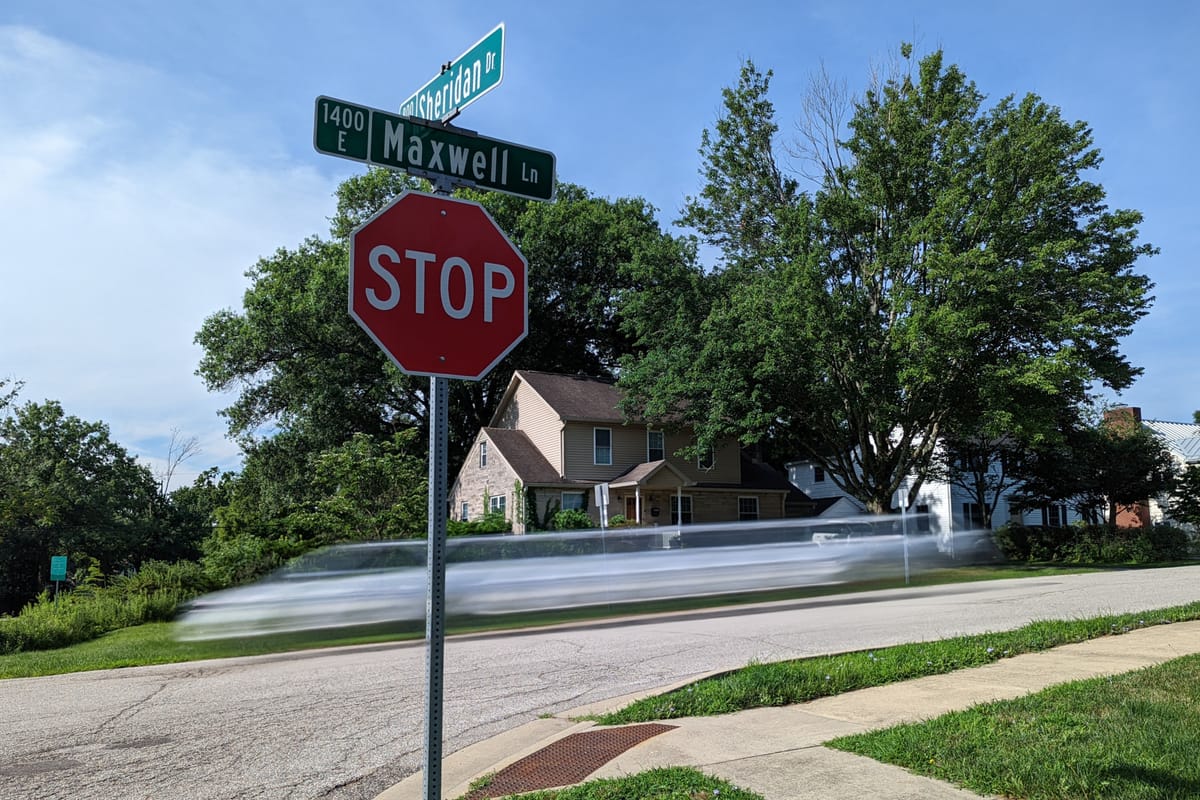
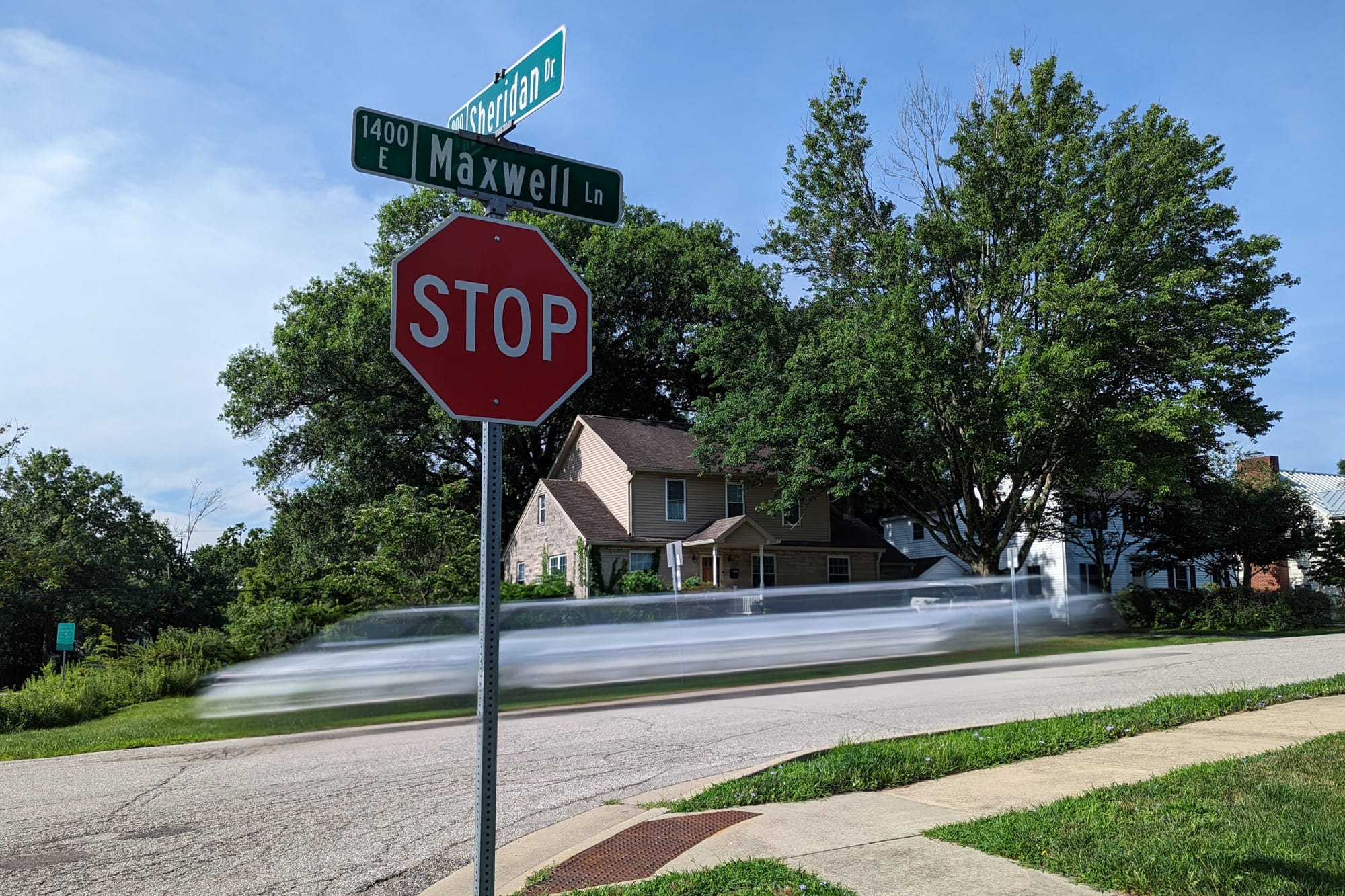
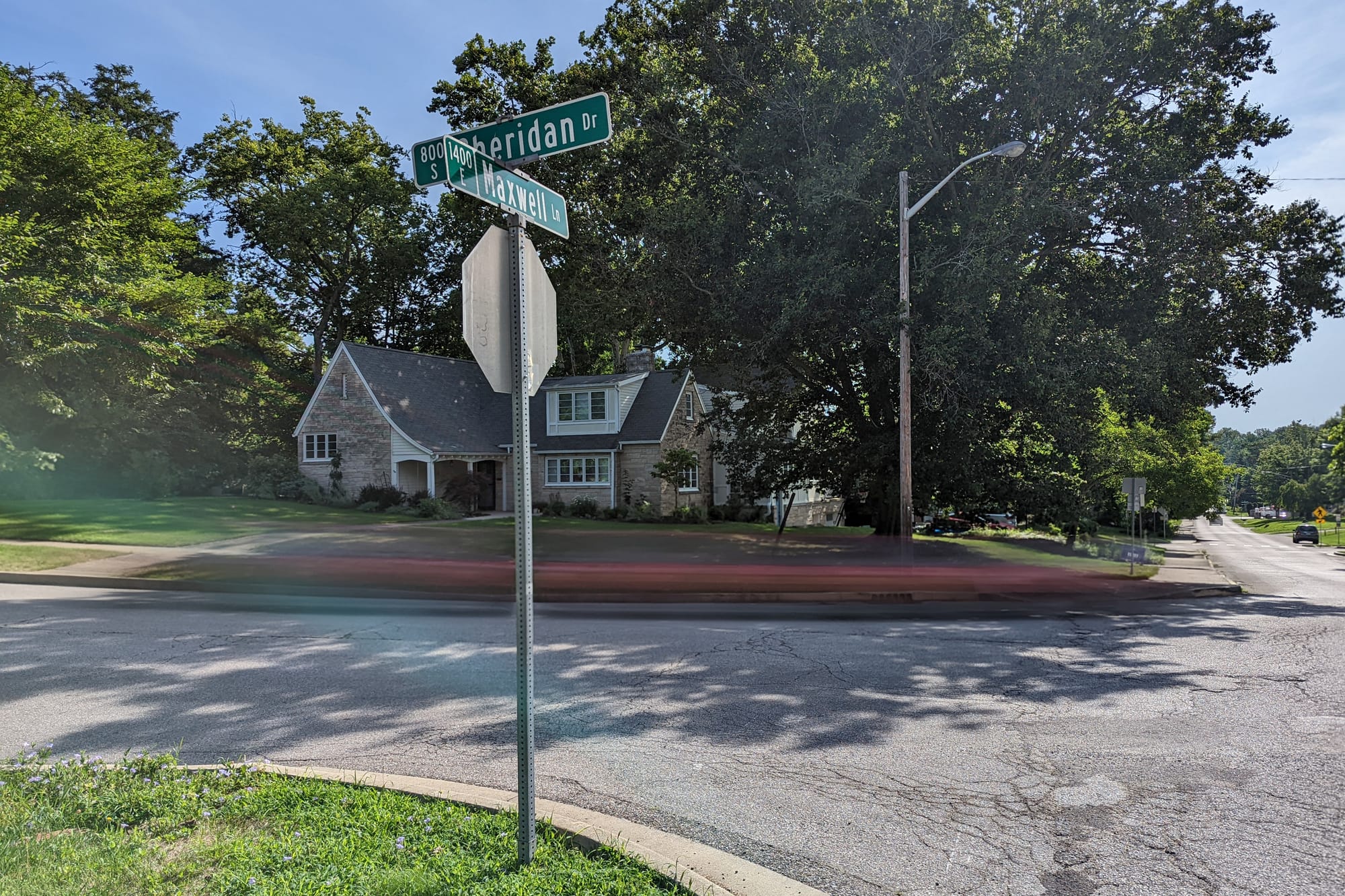
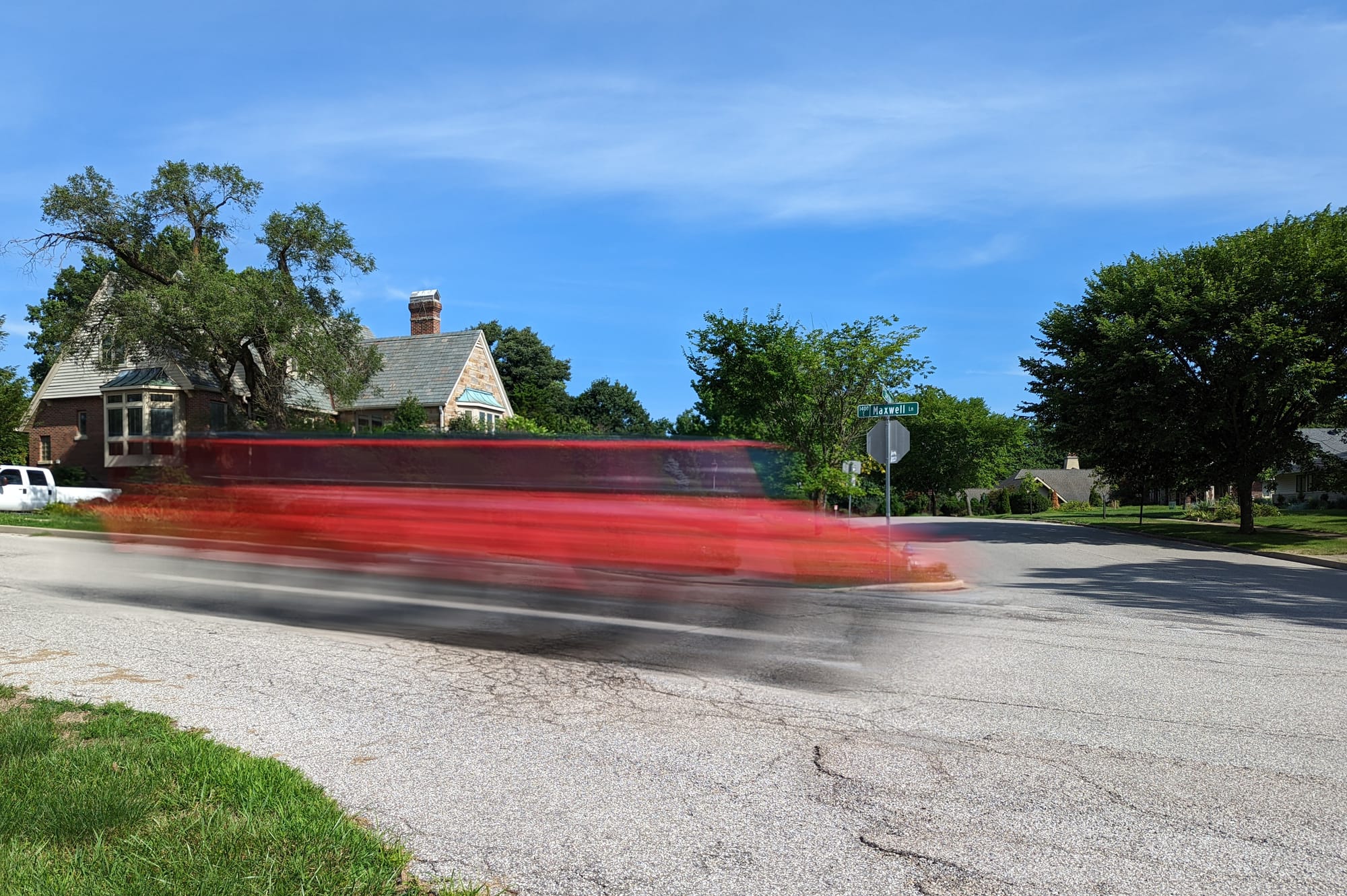
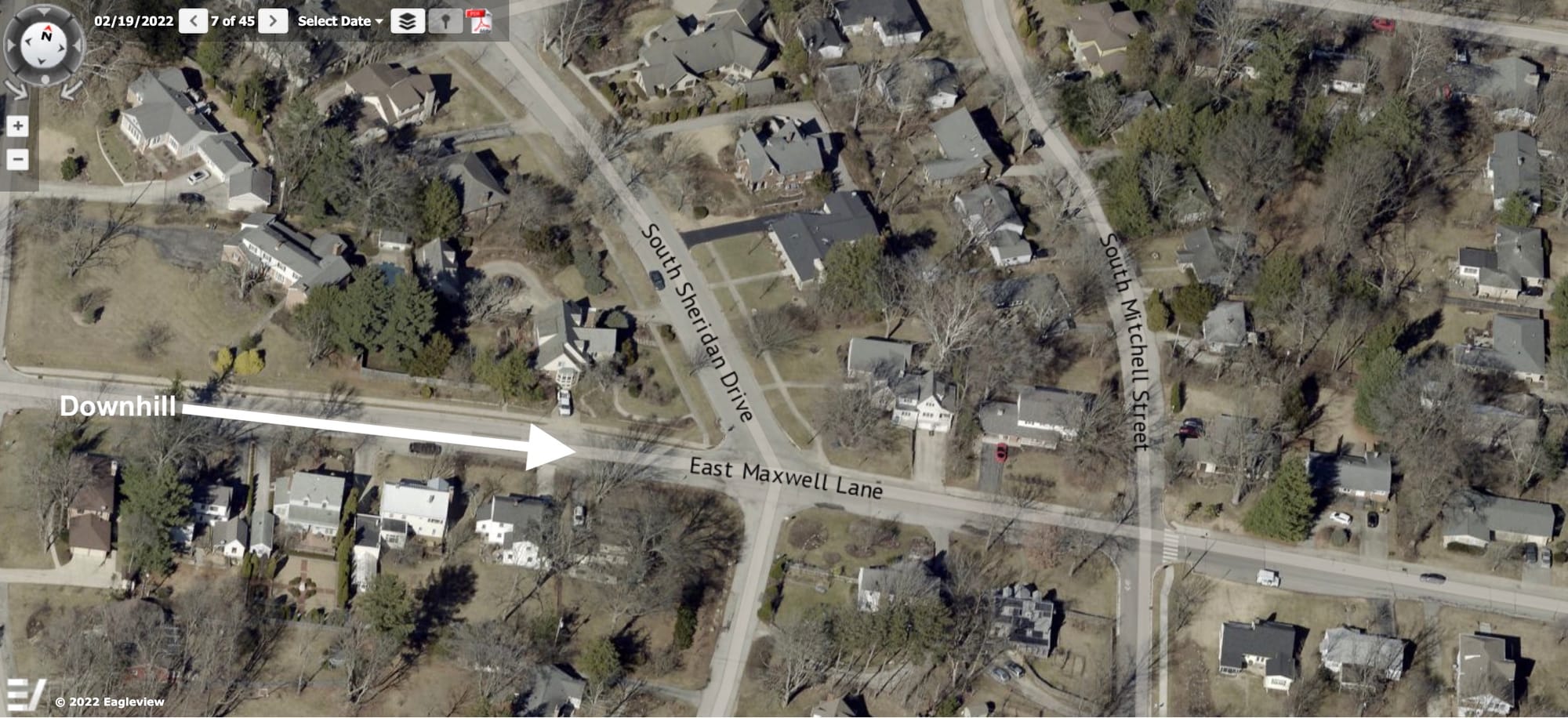
Residents who live near the intersection of Maxwell Lane and Sheridan Drive, which is located in a central Bloomington neighborhood, want to be able to walk across Maxwell, without “scurrying” to the other side.
As Stephanie Hatton put it, when she addressed Bloomington’s traffic commission on Wednesday night, “We feel that the only way to make this intersection truly safe for all is to legally require vehicles to cease—not just slow down or be calmed.”
Hatton added, “An all-way stop ensures pedestrians of all ages and abilities have the time and right-of-way to cross safely.”
Neighbor and former city clerk Regina Moore called Hatton’s presentation to the commission at its Wednesday meeting “one of the most extensive and well-presented citizen presentations that I’ve witnessed in my over 30 years of attending city meetings.”
Despite Hatton’s presentation, if the requested all-way stop is installed, it won’t be with the support of the city’s traffic commission.
On a 5-2 vote the commission instead supported the engineering department’s staff written recommendation, which stated: that “[T]his intersection does not meet the MUTCD (Manual on Uniform Traffic Control Devices) guidelines for all-way stop control…”
The added stop signs would require Maxwell Lane traffic to stop at Sheridan Drive.
But the recommendation from engineering staff does not indicate strong opposition to making the intersection an all-way stop.
The recommendation starts like this, “Staff acknowledges the unique traffic pattern at this intersection and does not have significant concerns if an all-way stop is installed.”
If a proposed new stop sign had the explicit support of engineering staff and the traffic commission, it would almost certainly win eventual approval from the city council. Typically, when the annual raft of staff-supported proposed changes to the city’s traffic code appears on the council’s agenda, it’s a mostly uncontroversial ordinance. This year’s collection of traffic code changes will be considered as a part of the city council’s Aug. 3 meeting agenda.
But the decision to make an intersection into an all-way stop, does not require a positive recommendation from staff or the traffic commission. “Ultimately, it is a city council decision…this body does not have that authority,” said city engineer Andrew Cibor, who is also a member of the traffic commission.
The Maxwell-Sheridan intersection sits in city council District 4, which is represented by Dave Rollo. At Wednesday’s traffic commission meeting, Rollo indicated he would be willing to sponsor the ordinance that the council would have to enact, in order to add the stop signs there.
After the traffic commission’s meeting, Rollo responded to a written question from The B Square by replying: “I will now meet with the neighbors affected to determine how they would like to proceed.”
Rollo’s reported communication with engineering staff sounds consistent with the part of the recommendation that says if an all-way stop were installed, staff don’t have significant concerns: “I was told by engineering that a stop sign was feasible—that is, workable,” Rollo said.
Rollo’s perception of the intersection as dangerous matches that of immediate neighbors. At Wednesday’s traffic commission meeting, Rollo said, “It is unique. It’s hazardous. And I think it deserves unique consideration for that reason.”
It was project engineer Neil Kopper who presented the engineering department’s perspective on the question of making the intersection an all-way stop. Kopper cited the MUTCD (Manual on Uniform Traffic Control Devices), which provides criteria defining when all-way stops are warranted.
Among the criteria are the number of crashes recorded at the intersection. If five or more crashes have taken place in a 12-month period, that could be corrected by a multi-way stop installation, then a stop sign is warranted. But Kopper said no crashes had been recorded for that intersection for the last five years.
The counter to that point came from several people who spoke during public comment, who said that it was only a matter of time before a crash would happen there—if no stop signs were installed.
Emeritus professor of mathematics at Indiana University Chuck Livingston reminded commissioners that it was only after his 80-year-old colleague Max Zorn was hit by a car as he was crossing 3rd Street that the city installed traffic signals on 3rd Street—at Hawthorn and Woodlawn. Zorn’s injuries from the crash contributed to his death in 1993.
Kopper told the commission that traffic calming measures would be a more appropriate solution to the issues that residents had identified, which he understood to include speeding on Maxwell Lane. Residents had been encouraged to submit an application to the city’s resident-led traffic calming program.
Hatton countered the option of installing traffic calming infrastructure in a few different ways.
A key reason Hatton had discontinued any effort to pursue funding through the traffic calming program was opposition from her own neighbors—they did not want speed bumps installed on Maxwell. During public commentary, one neighbor gave a reason for opposing speed bumps—the discomfort and pain for anyone with a spinal issue who drives over a speed bump.
Another counter to traffic calming cited by Hatton was cost: Compared to stop signs, speed cushions (humps, or bumps) are more expensive to install.
The hill that leads down Maxwell from the west formed the basis for another counter to traffic calming devices. Hatton had calculated the grade of the hill, using a tape measure and level—she pegged the grade at 8.3 percent.
The road grade is relevant, because the US Department of Transportation Federal Highway Administrations says speed bumps should be considered only on a street with a grade of 8 percent or less, according to Hatton. She said some jurisdictions use a lower percentage.
Hatton also told the commission that she had contacted Bloomington Transit and the Monroe County Community School Corporation to ask about the potential impact on the timing of bus routes. Hatton reported that neither organization was opposed to a four-way stop at the intersection, and it would have no measurable impact on route scheduling.
Beyond the fact that the traffic volumes and crash data are not in line with the MUTCD guidance for all-way stops, Kopper said the city engineering department had concerns about the effect of installing stop signs where they are not warranted under MUTCD guidance.
Such stop signs are often violated, Kopper said, because drivers approaching the intersection so rarely see what they think is a reason to stop—which means they get accustomed to just slowing down a little bit. And as drivers slow down just a little bit, they might not notice a pedestrian who is trying to cross the street.
Kopper said stop signs just are not an effective tool for slowing traffic.
Hatton’s presentation, with the added commentary from the public, seemed to resonate with traffic commissioners, even those who voted to support the engineering staff recommendations.
City engineer Cibor said, “This is a tough intersection.” He added, “I think something should happen here.”
Traffic commissioner Greg Alexander highlighted one of the sets of measurements Hatton had done on the size of the intersection. She had shown the broad sweeping turn from westbound Maxwell onto northbound Sheridan and noted that drivers don’t even slow down to take that turn with its big radius.
Alexander said about that intersection size data: “That was fantastic. She really pointed out the low-hanging fruit that engineers should be looking at when trying to control traffic speeds, especially the width of intersections, and crossings, and turn radiuses.”
But in the end, Alexander said he could not support the request for stop signs, because it would not achieve the goal. “Staff is being asked to apply a technique they know won’t work,” Alexander said. “Stop signs are cheap, but they don’t solve this problem. And this problem is really worth solving.”
Alexander wrapped up by telling Hatton and her neighbors: “You guys deserve to cross the road.”




Comments ()